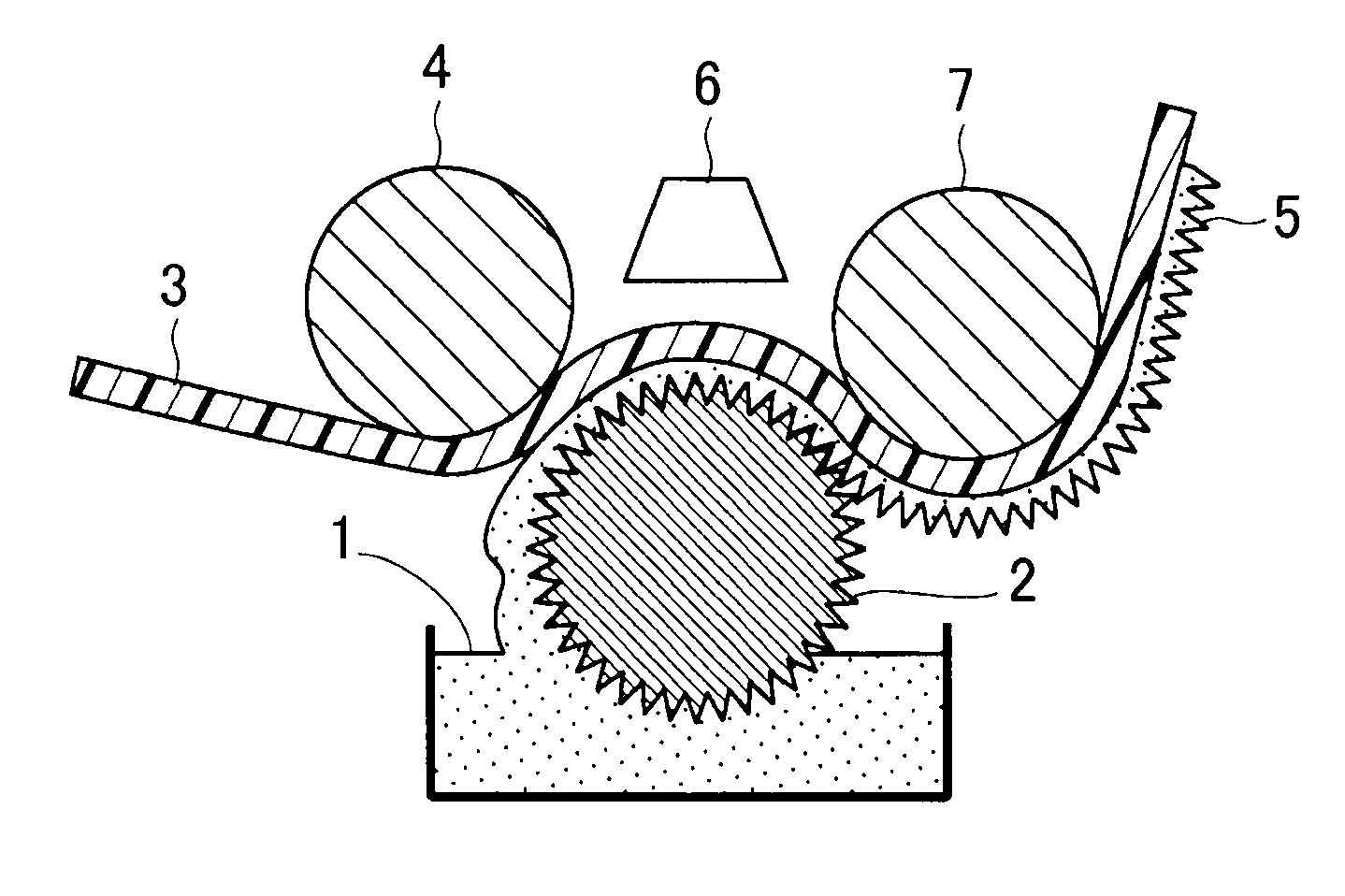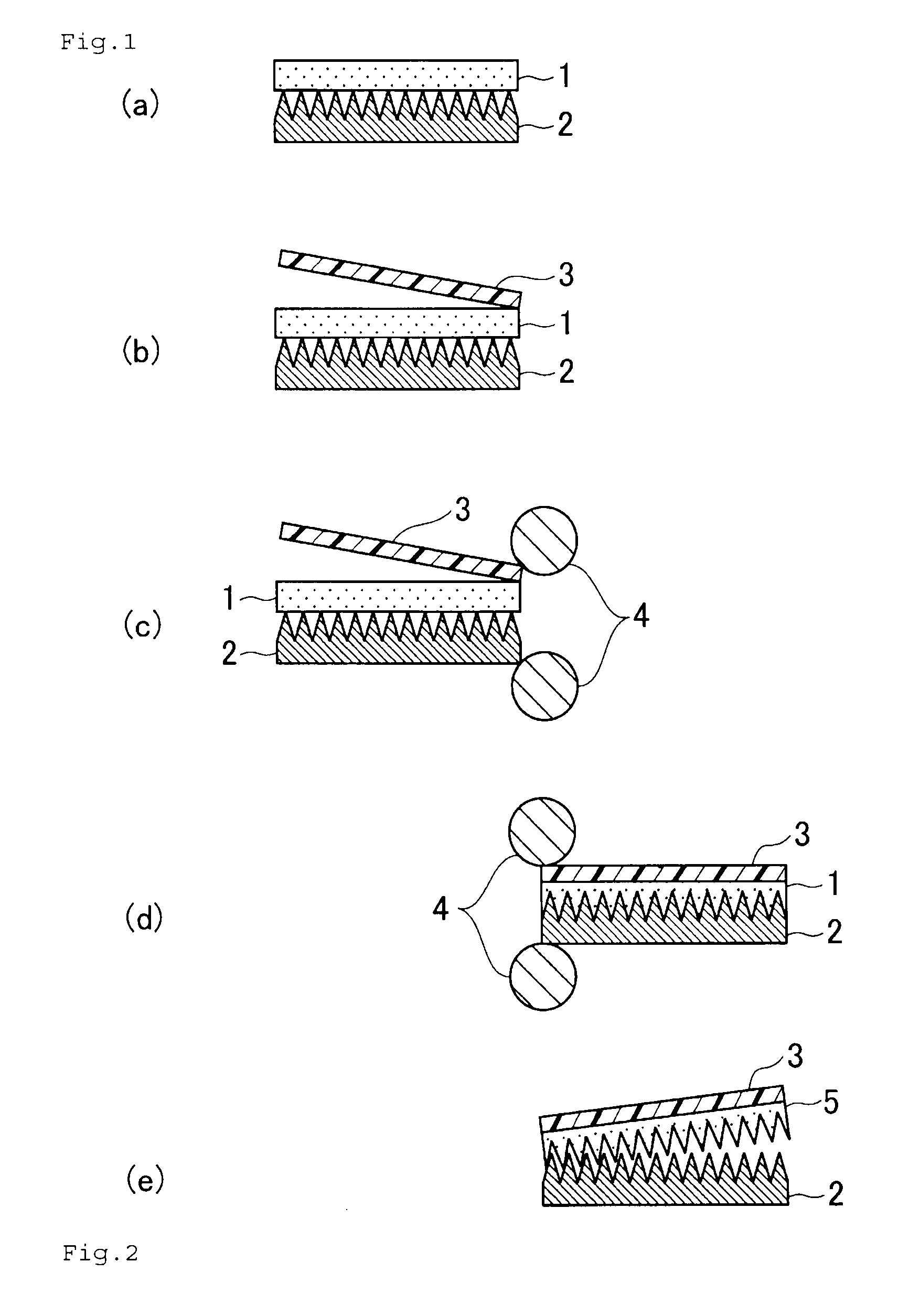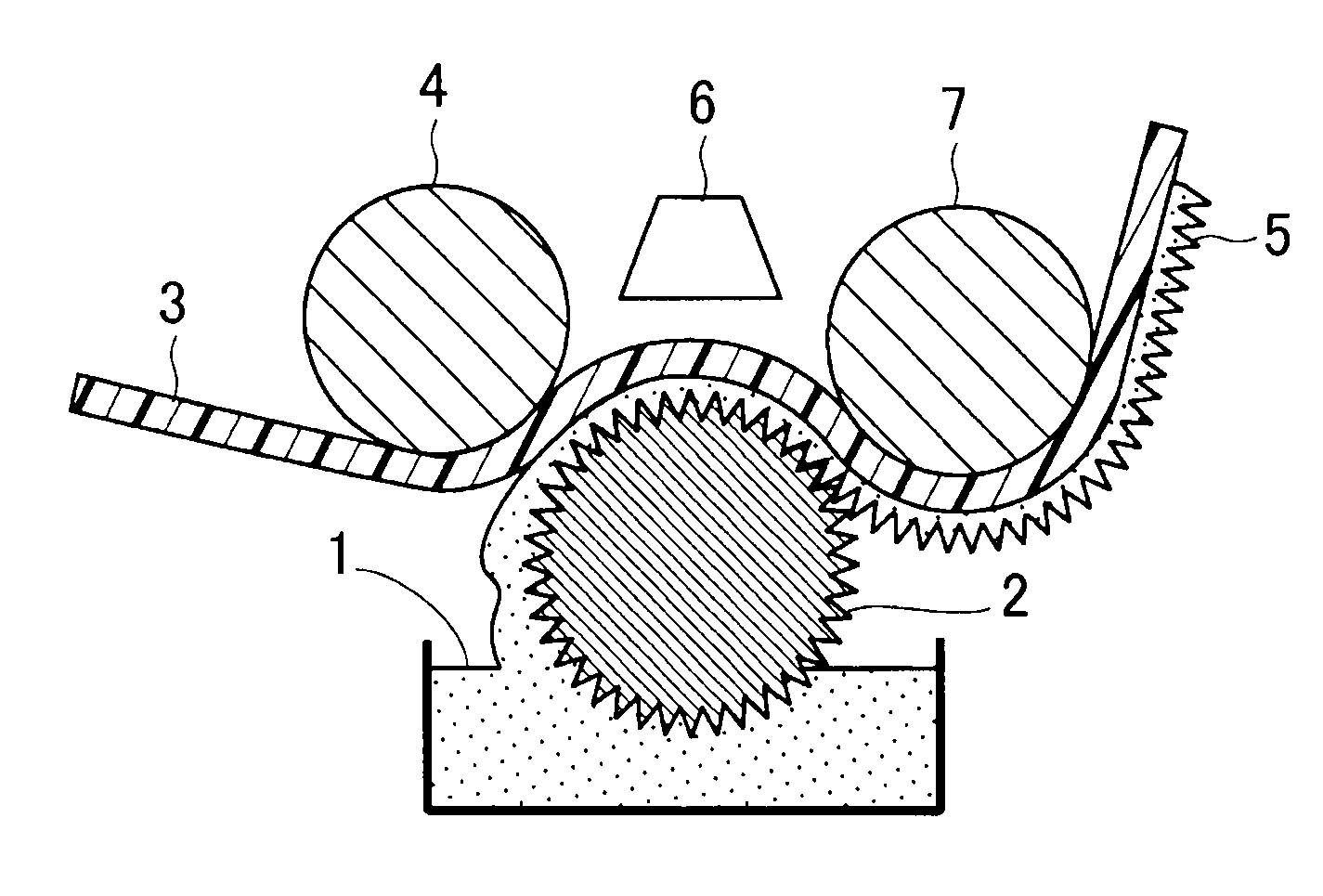Antireflective film and production method thereof
a technology of anti-reflective film and production method, which is applied in the field of anti-reflective film, can solve the problems of insufficient anti-reflective film not only in anti-reflective property, and achieve the effect of improving light transmissivity and anti-reflective property
- Summary
- Abstract
- Description
- Claims
- Application Information
AI Technical Summary
Benefits of technology
Problems solved by technology
Method used
Image
Examples
example 1
[0107]A rolled aluminum plate of 99.85% (2 mm thickness) as an aluminum material was polished for 10 minutes by a single-sided flat buff polishing machine (manufactured by Speedfam Co., Ltd.) and by adopting an alumina-based abrasive (produced by FUJIMI INCORPORATED), to obtain a mirror surface. The polished surface was scrub cleaned, and a non-corrosive degreasing treatment was conducted thereafter.
[0108]Further, the following condition of anodic oxidation was combined with the following etching (pore diameter enlarging) treatment condition for the formed anodic oxide coating, to produce a mold having taper-shaped pores.
[0109]Used solution: 0.05M oxalic acid[0110]Voltage: DC voltage of 80V[0111]Temperature: 5° C.[0112]Time: 50 seconds
[0113]Used solution: 2 wt % phosphoric acid[0114]Temperature: 50° C.[0115]Time: 5 minutes
[0116]The anodic oxidation and the etching (pore diameter enlarging) were alternatingly repeated 5 times, to obtain an anodic oxide coating surface having taper-sh...
example 2
[0124]Conducted was the same procedure as Example 1 to obtain an antireflective film, except that polishing was conducted by a board buff with an abrasive containing colloidal silica (produced by FUJIMI INCORPORATED) as a main component, instead of polishing by an alumina-based abrasive in Example 1.
example 3
[0125]Conducted was the same procedure as Example 1 to obtain an antireflective film, except that polishing was conducted by a bias buff (manufactured by Koyo-Sha Co., Ltd.) with a silicic anhydride-based abrasive oil (produced by ICHIGUCHI Corporation), instead of polishing by an alumina-based abrasive in Example 1.
PUM
| Property | Measurement | Unit |
|---|---|---|
| height | aaaaa | aaaaa |
| height | aaaaa | aaaaa |
| haze | aaaaa | aaaaa |
Abstract
Description
Claims
Application Information
 Login to View More
Login to View More - R&D
- Intellectual Property
- Life Sciences
- Materials
- Tech Scout
- Unparalleled Data Quality
- Higher Quality Content
- 60% Fewer Hallucinations
Browse by: Latest US Patents, China's latest patents, Technical Efficacy Thesaurus, Application Domain, Technology Topic, Popular Technical Reports.
© 2025 PatSnap. All rights reserved.Legal|Privacy policy|Modern Slavery Act Transparency Statement|Sitemap|About US| Contact US: help@patsnap.com



